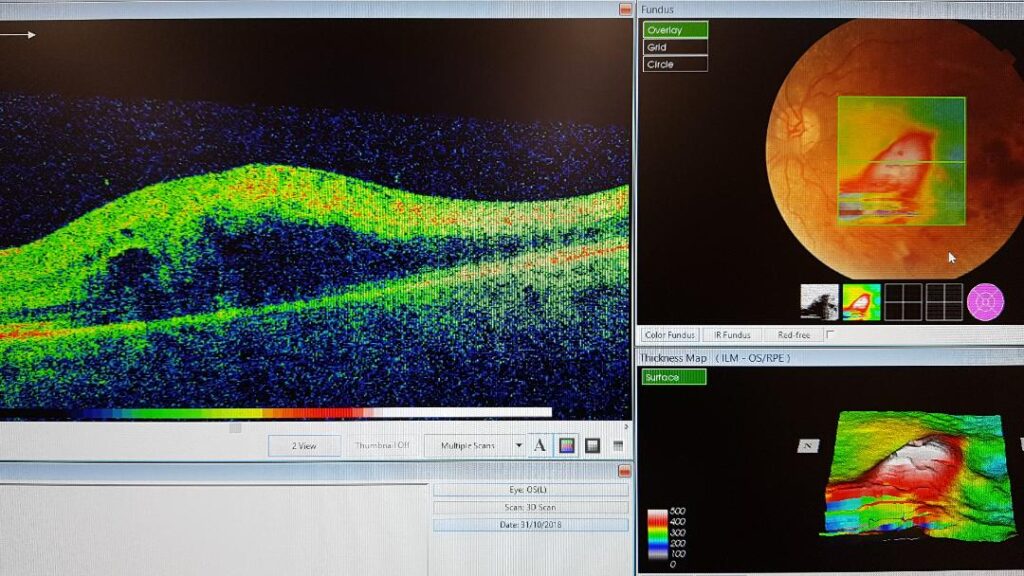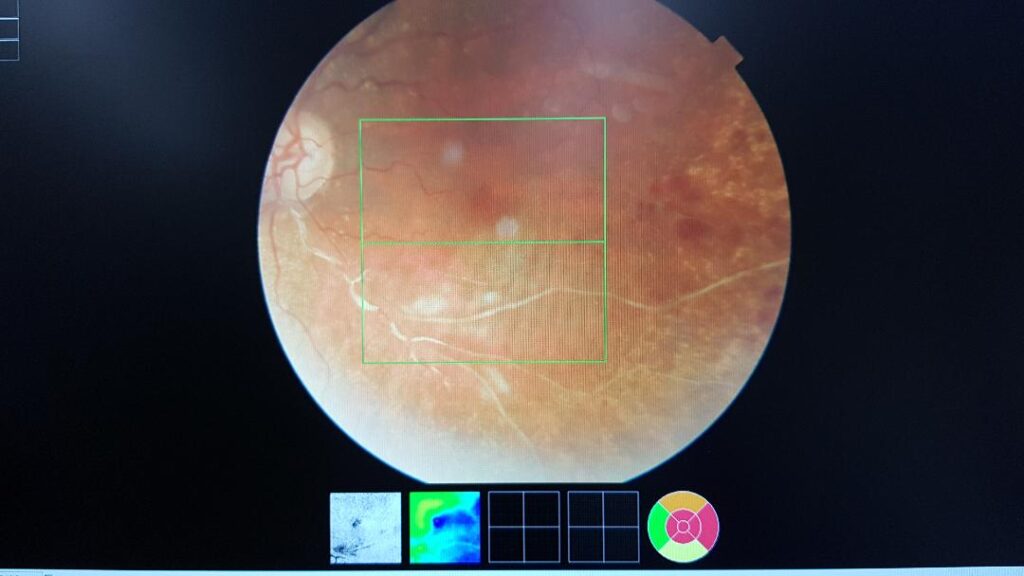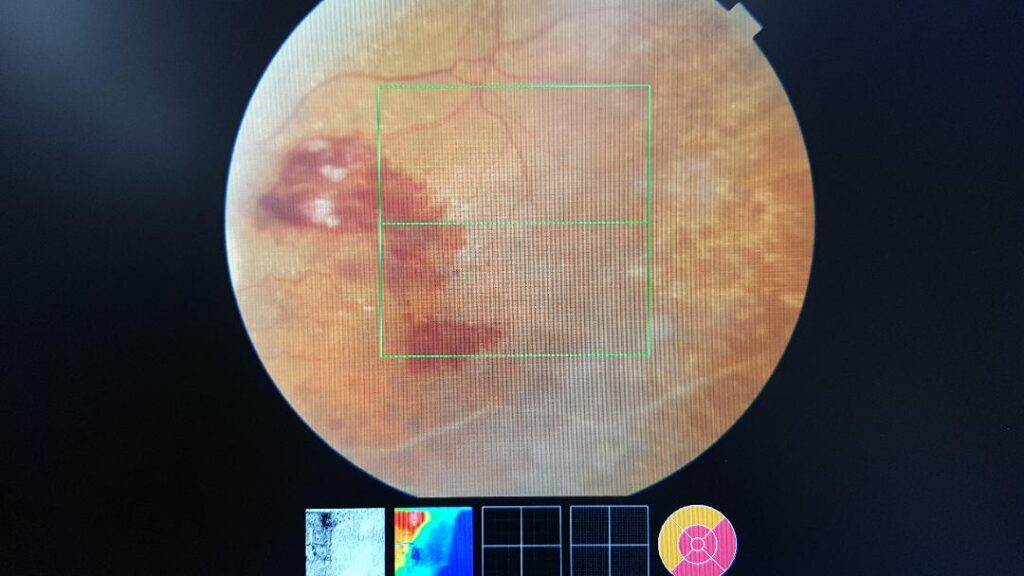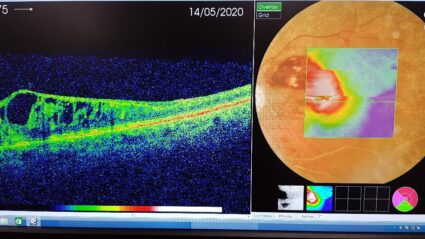It is usually unilateral retinal pathology, which is usually associated with high blood pressure and generalized vascular disease. This pathology is more common in women who are in the sixth decade of life and can also be associated with decreased visual acuity.
It is a focal dilatation in the area close to an arteriovenous crossing or in the area of the first arteriolar ramification.
The patient has no symptoms in this pathology, which is why in most cases, it is diagnosed as a casual finding when exploring the retina with the pupil in mydriasis, However, there are cases in which it is associated with hemorrhages due to rupture of dilated blood vessels. If the exudation is chronic, it can coexist with macular edema, limiting the patient’s ability to see.
Treatment is planned depending on how compromised the patient’s vision is. Usually macroaneurysms spontaneously fibrose over time, but this is not always the case on other occasions, being valid, from: frequent observation (when visual acuity is not affected), up to YAG laser treatment when they produce subhyaloid hemorrhage, up to Argon laser photocoagulation to fibrosate them, and recently injection of antiVEG. This injection is giving good results in reabsorbing hemorrhage and macular edema.
There are other retinal vascular disorders that can coexist with this disease, such as venous thrombosis or arterial embolism, in patients with the already known cardiovascular risk factors.
Below I am going to present the case of a patient in whom, at different points in her evolution, she has branching veins thrombosis and retinal macroaneurysms with macular edema in the same eye.
MRF patient, is a woman in the seventh decade of life, with a history of hypertension under treatment and hypercholesterolemia.
The patient consulted for decreased visual acuity in the left eye (40% with its correction), and on ophthalmological examination, an acute macular edema associated with venous thrombosis of the inferior temporal branch was observed in the macular Optical coherence tomography (OCT) ,is an imaging technique that uses low-coherence light to capture micrometer-resolution, two- and three-dimensional images from within optical scattering media. the images show the hemorrhages and exudates corresponding to the area of the obstruction, as well as the increase in macular thickness caused by central edema.


She immediately received a monthly treatment of Antiveg intravitreal injections (Ranibizumab), with the classic schedule of three injections, one per month, with the evident result of an increase in visual acuity to 70%, resolution of bleeding, exudation and macular edema. As a sequel, partial macular atrophy is observed in the affected area, and the phantom vessels are clearly visible, through which blood flow no longer circulates.


All this process has been cured, then, and due to the notable improvement, the patient is seen in the clinic two months after this procedure.
This happened just before confinement by COVID 19, so the patient canceled the scheduled appointment twice. After this time, she came to the clinic four months later than she should have been, the patient came with increased macula edema, which on this occasion has been treated with intravitreal Afibercept in a single session, with complete resolution of the frame and 100% visual acuity.
During the exploration in the follow-up consultation , a new image is seen, compatible with retinal macroaneurysms dependent on the upper temporal arcade, retinal hemorrhage with involvement of the inner layers and new associated macular edema, and that visual acuity has decreased again to 70%.


Then it is treated again with new intravitreal Aflibercept, and in a second consultation, Photocoagulation is performed with the Argon laser on the visible macroaneurysms. The result is absolutely satisfactory, with resolution of bleeding and edema and recovery of visual acuity.
I have written about this case,to verify that it is important to have good strict control over metabolic risk factors such a blood pressure,blood glucose and cholesterol,especially in patients with chronic treatment.


Recent Comments